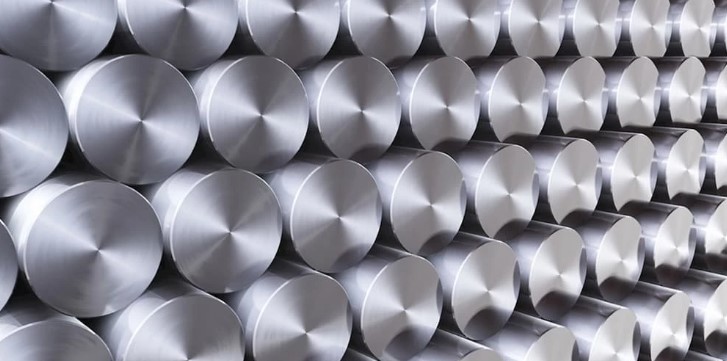The Future of Crude Steel: Innovation and Challenges

The basis of industrial development has always been crude steel production. And as we move into the future, it will be shaped by technology and environmental concerns. Such a future holds both exciting opportunities and complex challenges for the steel industry. Everywhere – from building construction to transportation to household appliances, Crude steel is used. But there’s a new trend and companies around the world are rethinking the way they make and use steel.
Why crude steel is important
Crude steel is the raw material from which every other type of steel is made. It is a much-needed product in many different industries, especially as the world population continues to rise and increasingly important infrastructure is being built. China alone has produced more crude steel than any other country in the world for several years and accounted for well over half of world production. But what about the future of this crucial material?
Key innovations in crude steel production
Although the steel industry is traditional, it has recently introduced innovations. New technologies and methods have advanced the steel production scene and aim for sustainability and efficiency. Here are some of the key innovations that will shape the future:
1. Green production steel
- Hydrogen-based steel production: probably the most hyped innovation through the use of hydrogen instead of coal. Hydrogen acts as a reducing agent and reduces carbon emissions by around 90%.
- Electric arc furnaces (EAF): EAFs are increasingly being used because they can recycle scrap metal, reducing the use of raw materials.
- Use of renewable energy: Recently, steel mills have started using renewable energy. This has reduced the carbon footprint of Crude steel produced.
2. Automation and AI integration
- Smart factory: Automation makes steel production systems intelligent. These factories are based on robots and AI, which improves efficiency and reduces errors.
- Predictive maintenance: AI can predict equipment failures before they actually fail, saving money and time.
3. Additive manufacturing
- 3D printing of steel: Additive manufacturing is increasingly finding its way into the steel industry. This type of 3D printing allows for the creation of highly customized parts without molds or castings.
- Efficient use of materials: 3D printing creates minimal waste, resulting in cheaper and more environmentally friendly processes.
Challenges in the crude steel industry
Although innovations provide hope, there are some negative impacts that threaten to slow growth. These can only be overcome if there is a more sustainable future for crude steel in any country, more so than in China.
1. Environmental Impact
- Carbon dioxide: The process of producing crude steel has long been one of the leading carbon emitting sectors. From the perspective of hydrogen-based production, a lot is happening; Nevertheless, this new alternative costs significantly and is progressing gradually.
- Energy: Steelmaking is energy intensive and therefore finding alternative, more sustainable energy sources can help reduce the associated environmental impact.
2. Supply chain disruptions
- Shortage of raw materials: The two most important raw materials for steel production – iron ore and coking coal – will be in short supply. As these resources become scarcer, their prices continue to rise, making steel production more expensive.
- Geopolitical risks: As has already been recognized in some cases, global steel supply chains are being disrupted due to tensions between major economies such as the US and China. Countries with heavy dependence on steel imports will experience price increases or shortages.
3. Global competition
- China’s leadership: This is both a strength and a weakness, as the same Chinese companies are leaders in manufacturing innovation, but oversupply in the market causes disruption in the global steel market, driving up or down global steel prices.
- Other countries: Indian and Brazilian countries have increased capacity to increase their production capacity, increasing fierce competition in international steel markets.
China’s future role in crude steel
China is leading the future of crude steel. Its production capacity and technological development have set a trend for the rest of the industry. How does it become the leader of the pack?
1. Output capacity
The country has more than half of the world’s crude steel production. Huge investments in new technologies improve production efficiency and respond to increasing demand at home and abroad.
2. Innovation in steel production
- Environmental policy: China has introduced stricter environmental regulations that have forced steel producers to adopt cleaner technologies. For example, many Chinese steel mills are switching from traditional blast furnaces to electric arc furnaces.
- Research and Development: Chinese steel Companies are also investing in research and development to make steel production cheaper and more environmentally friendly. This includes experimenting with carbon capture and storage technologies that could dramatically reduce emissions from steel mills.
3. Export expertise
Technology exchange: Most Chinese companies export their steel production technologies and know-how to other countries. This has positioned China not only as a manufacturing leader but also as a technology leader in the global steel industry.
Crude steel trends in the future
What is the status of crude steel and how will future innovations significantly influence China’s steel production? Several trends are therefore likely to dominate the market in the coming years.
1. Decarbonization
Building on this momentum, carbon-free steel production will increasingly occur. More and more companies in China and around the world will look into green technologies such as hydrogen-based reduction and carbon capture.
2. Circular economy
Recycling will play an increasingly important role in sustainability in the steel industry. The use of scrap metals instead of raw materials leads to a drastic reduction in the environmental impact of crude steel production.
3. Digitalization
More and more digital technologies, including artificial intelligence, machine learning and the Internet of Things, will impact steelmaking processes in the near future. Efficiency with as little waste as possible and thus a competitive business is supported by digitalization.
4. Development in the global supply chain
More and more countries will have their own steel production capacity, which will change the face of global supply chains. The China region will no longer be the only major producer, but other parts such as Southeast Asia and Africa will become emerging markets.
Diploma
The future of crude steel lies at the intersection of innovation and sustainability. Under China’s leadership, it will make advances in technology and environmental sustainability. However, there are challenges ranging from environmental concerns to the impact of supply chain disruptions and global competition. The crude steel industry should therefore take a pioneering role in new technologies, but at the same time face increased pressure for sustainable practices. This is the future steel material of the next decades, essential for human progress.





